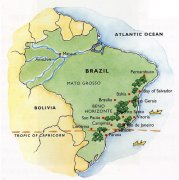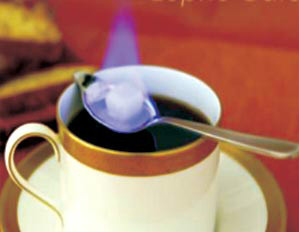Coffee bean production method production area
Luwak coffee beans.
Kopi Luwak (Indonesian for coffee), Luwak is Indonesian for a wild arboreal animal commonly known as the "civet" that looks similar to the civet in southern China. Of Sumatra, Java, and Survish islands, part of Indonesia's 13,677 islands. Luwak belongs to omnivores. They are solitary, sensitive in smell, thick hair and long tail. They like to sleep at night. They inhabit tropical rain forest, subtropical evergreen broad-leaved forest, mountain shrub or hills, mountains and grass below 2000 meters above sea level. Their diet includes small mammals, birds, amphibians and reptiles, crustaceans, insects and plant fruits, seeds and so on.
Sumatra, Indonesia produces excellent coffee beans, which were recovered from civet dung in the bush.
Lianhe Zaobao reported on the 6th that there is a coffee garden 100 kilometers southeast of Medan City in Sumatra Island. Every morning, operators go to the coffee garden to look for civet feces and pick out coffee beans. They think civet cats are natural machines for removing coffee pulp.
Civets eat the most ripe coffee cherries. Enzymes break down the pulp of the coffee cherries and then expel the coffee beans. Workers collect the beans, wash away faeces and make a drink that coffee lovers find hard to resist.
When coffee beans enter the civet's digestive system, enzymes that break down protein into small molecules interact with the beans... When the beans are roasted, these small molecular proteins react chemically with the carbohydrates or sugars in the beans, giving "luwak coffee" its famous natural chocolate flavor, explained Marconi, assistant professor in the Department of Food Science at the University of Guelph in Canada

Important Notice :
前街咖啡 FrontStreet Coffee has moved to new addredd:
FrontStreet Coffee Address: 315,Donghua East Road,GuangZhou
Tel:020 38364473
- Prev

Volcano San Marco Manor Fine Coffee Coffee Network Bean Hunter
Volcano San Marco Volcanic San Marcos: volcano San Marco Volcanic San Marcos: San Marco has the hottest climate of the eight largest coffee producing areas in Guatemala, with a maximum rainfall of 200inches (5000 mm). The rainy season is earlier than in other areas, and coffee trees bloom earlier. Like other remote areas of Guatemala, the volcano San Marco coffee is grown by small farmers.
- Next

How to choose fresh coffee beans
Choose fresh coffee beans. When buying, pay attention to whether the color of the beans and the size of the particles are the same. Good coffee beans are shiny and have a strong aroma without being mixed with peculiar smell. No matter what kind of coffee beans, freshness is an important factor affecting the quality. When shopping, grab one or two coffee beans and chew them in your mouth with crisp sound (indicating that the coffee is not damp) and teeth and cheeks.
Related
- Does Rose Summer choose Blue, Green or Red? Detailed explanation of Rose Summer Coffee plots and Classification in Panamanian Jade Manor
- What is the difference between the origin, producing area, processing plant, cooperative and manor of coffee beans?
- How fine does the espresso powder fit? how to grind the espresso?
- Sca coffee roasting degree color card coffee roasting degree 8 roasting color values what do you mean?
- The practice of lattes: how to make lattes at home
- Introduction to Indonesian Fine Coffee beans-- Java Coffee producing area of Indonesian Arabica Coffee
- How much will the flavor of light and medium roasted rose summer be expressed? What baking level is rose summer suitable for?
- Introduction to the characteristics of washing, sun-drying or wet-planing coffee commonly used in Mantenin, Indonesia
- Price characteristics of Arabica Coffee Bean Starbucks introduction to Manning Coffee Bean Taste producing area Variety Manor
- What is the authentic Yega flavor? What are the flavor characteristics of the really excellent Yejasuffi coffee beans?

